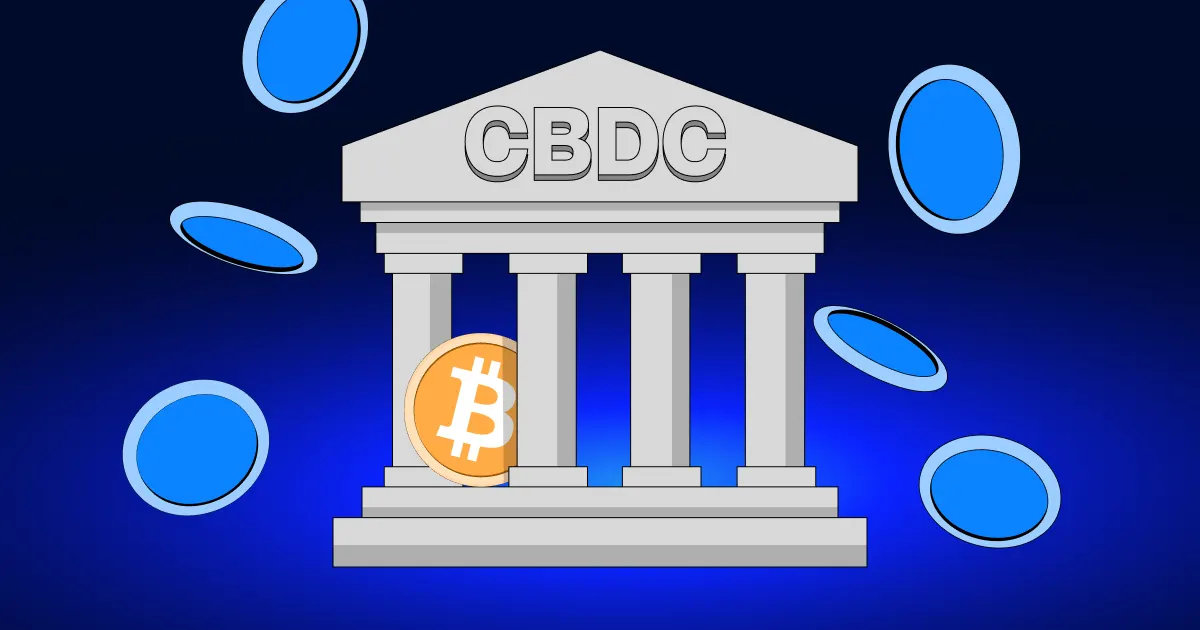The world of digital finance is changing quickly, and stablecoins and Central Bank Digital Currencies (CBDCs) are two of the most important players in this space. They both want to make financial transactions more efficient and give people a more digital form of money, but they are very different in terms of where they come from, how they are governed, how stable they are, and how they can be used. This article goes into detail about the main differences between these two types of digital currencies by looking at their features, governance structures, stability mechanisms, and use cases.
What are Stablecoins?
Stablecoins are digital currencies that are linked to an asset, like a fiat currency (like the US dollar) or a commodity (like gold), to keep their value stable. The goal is to combine the best parts of cryptocurrencies, like quick and cheap transactions, with the stability of traditional assets. Most of the time, private companies issue stablecoins, and they usually work on blockchain networks like Ethereum, Binance Smart Chain, or Solana.
Key Characteristics of Stablecoins:
- Backed by assets: Stablecoins are usually linked to fiat money or goods. Tether (USDT), which is tied to the US dollar, and Dai, which is backed by a group of cryptocurrencies, are two well-known examples.
- Decentralization: Some stablecoins are decentralized, which means they don’t have a central authority to run them. Others are centralized, which means that certain companies or organizations run them.
- Blockchain technology: Stablecoins are built on blockchain platforms, which makes them open, quick, and easy to get to.
- Governance: Different stablecoins have different ways of being governed. Some are run by the company that made them, while others are run by decentralized organizations (DAOs) that let people in the community help make decisions.
What are Central Bank Digital Currencies (CBDCs)?
A country’s central bank issues and controls Central Bank Digital Currencies (CBDCs), which are a type of digital currency. CBDCs are direct representations of a country’s official fiat currency, like the US dollar, euro, or yuan. Stablecoins, on the other hand, are usually pegged to assets like fiat currencies or gold. CBDCs are digital versions of state-backed money that are important to modern financial systems.
Key Characteristics of CBDCs:
- Backed by the government: Central banks issue and control CBDCs, which means that the country’s reserves fully back their value.
- Centralized control: CBDCs are directly controlled and regulated by a central authority, unlike stablecoins, which can be decentralized.
- Stability: CBDCs are meant to be stable because they are tied directly to the country’s fiat currency and are subject to government oversight and monetary policy.
- Digital and physical coexistence: CBDCs are meant to work with regular physical currencies, making it possible to pay with both digital and physical methods.
Comparison of Stablecoins and CBDCs
Stablecoins and CBDCs both want to make it easier for us to do financial transactions, but they are different in a number of ways, especially when it comes to governance, stability, and use cases.
1. Governance
Stablecoins:
The way stablecoins are run can be either centralized or decentralized. Tether (USDT) is an example of a centralized stablecoin. It is run by one company or organization. Dai and Terra, on the other hand, are decentralized stablecoins. They are run by communities through decentralized autonomous organizations (DAOs).
- Centralized Governance: The company that issues centralized stablecoins has complete control over the coin’s reserves, issuance, and redemption. Tether, for instance, has a central organization that takes care of its assets and makes sure the peg to the US dollar stays in place.
- Decentralized Governance: Community members often help make decisions about decentralized stablecoins through protocols and smart contracts. For example, Dai is run by a decentralized governance system that lets people who own the stablecoin’s governance token (MKR) vote on changes and upgrades to the protocol.
CBDCs:
CBDCs are centralized by nature because the central bank of the country issues and controls them. This means that the government is in charge of making, using, and regulating the digital currency. Centralized governance allows central banks to effectively manage inflation and deflation and carry out monetary policies.
Stablecoins can be controlled by private companies or decentralized groups, but CBDCs are heavily regulated and watched over by the government.
2. Stability
Stablecoins:
The assets that back stablecoins are a big part of what makes them stable. Most stablecoins are tied to fiat currencies like the US dollar or the euro. Some are backed by a mix of assets or cryptocurrencies. But sometimes the stability of these coins can be affected. For instance, TerraUSD went down in 2022 because its algorithmic stability mechanism didn’t work.
- Fully-backed stablecoins: Coins like USDT (Tether) and USDC are backed 1:1 by fiat reserves. Their stability depends on the reserves being well-managed and audited.
- Algorithmic stablecoins: These stablecoins use algorithms to keep their peg and change their supply based on how the market is doing. They can be more unstable in volatile markets, even though they are decentralized.
CBDCs:
CBDCs, on the other hand, are stable by nature because they are backed directly by the central bank and represent the value of the national currency. Central banks can keep the value of CBDCs stable by using other monetary policy tools, such as controlling inflation and changing interest rates. Government support makes them more stable, which gives people more faith in their value.
CBDCs are tied to the economic health and stability of the country that issues them, but they are generally thought to be more stable than many stablecoins, especially algorithmic ones.
3. Use Cases
Stablecoins:
Stablecoins: Stablecoins are widely used in the cryptocurrency and blockchain worlds. They are used in decentralized finance (DeFi), sending money home, trading platforms, and as a way to protect yourself from markets that change quickly. Here are some of the most common ways that people use stablecoins:
- Trading: Stablecoins let crypto traders switch between unstable assets and a stable digital currency without having to go back to fiat.
- Decentralized Finance (DeFi): In DeFi protocols, stablecoins like Dai or USDC are commonly used for lending, borrowing, and liquidity provision.
- Cross-border payments: Stablecoins make it easy to send money quickly and cheaply, especially to countries where traditional banking systems are hard to access.
- Hedge against inflation: In countries with unstable fiat currencies, stablecoins offer a safer alternative to preserve value.
CBDCs:
The goal of CBDCs is to improve and modernize the current financial system. Their main uses are to make domestic payments better, help with monetary policy, and make sure everyone has access to financial services. Some of the main uses for CBDCs are:
- Domestic payments: CBDCs can make it easy and quick for people and businesses in the issuing country to send and receive payments.
- Monetary policy: Central banks can use CBDCs to better control the money supply, make changes to interest rates, and keep an eye on the economy.
- Financial inclusion: CBDCs give people in countries with a lot of people who don’t have banks a way to use digital financial services without having to go through traditional banking systems.
- Government disbursements: CBDCs can be used to send out government welfare benefits, which will save money and make things run more smoothly.
Pros and Cons: Stablecoins vs CBDCs
| Feature | Stablecoins | CBDCs |
| Issuer | Private entities | Central banks |
| Governance | Decentralized or centralized | Centralized |
| Backing | Fiat currencies, commodities, or crypto | Central bank reserves |
| Stability | Varies (may depend on reserve quality) | Inherently stable, backed by government |
| Use Cases | DeFi, remittances, trading | Domestic payments, financial inclusion |
| Privacy | Varies (some offer pseudonymity) | Government monitoring and oversight |
| Global Reach | Limited by platform support | Limited to the issuing country |
Conclusion
Stablecoins and CBDCs could both change the way money works, but they are not the same and have different uses. Stablecoins are great for the crypto world, DeFi, and remittances because they are flexible, have lower transaction costs, and are decentralized. CBDCs, on the other hand, promise a digital version of traditional fiat currencies. This gives central banks more control over monetary policy and makes CBDCs a safer and more stable alternative to fiat currencies.
Governments and banks are still looking into the possibilities of digital currencies. It’s likely that stablecoins and CBDCs will both be around in the future of money, each with its own purpose. How well they are used, regulated, and adopted by people all over the world will determine how well each one does.



